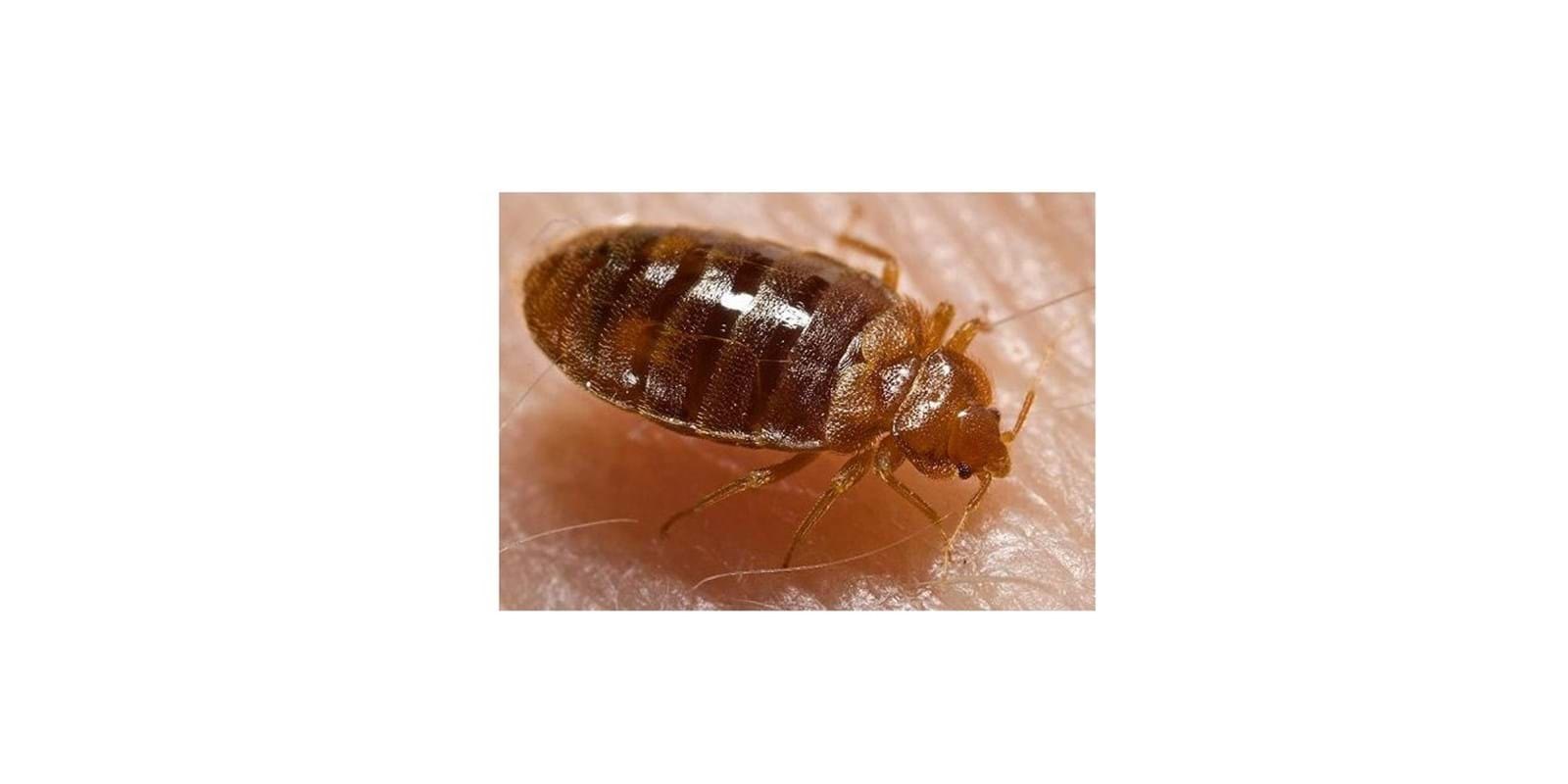Description
The bed bug (Cimex lectularius L.) is an hemimetabolic insect of the family of the hemipteres. It is 5 mm long and of a brown-reddish color (rather red after its meals). It has an oval and dorso-ventrically flattened body, which enables it to infiltrate in narrow cracks, such as the seams of mattresses. Its eyes are relatively small and its oral parts, of the stinging-nozzle type, enable it to pierce the skin of its host and then aspire his blood.
Development
The female can lay up to 200 eggs, at intervals of two per day. She sticks them on the surfaces so that, when they hatch at the end of one to three weeks, they will be close to a source of food. The nymph, which resembles the adult, undergoes five moults before reaching the adult stage at the end of 14 to 30 days. After each moult, the nymph must nourish itself with blood. The duration of its life cycle is very variable. On average, it takes from 4 to 9 weeks to be completed, although sometimes it can take a whole year.
Habits
Bugs are insects which adapt very well to the environment, even in spite of adverse conditions. Thus, the adults can live more than one year without food and spend the winter in an unheated dwelling. The nymphs are practically equally resistant. The bed bugs are active during the night, when their host, in fact humans, is inactive. However, when the premises are occupied only by day, the bugs will not hesitate to attack humans during these hours. These insects leave traces of blood and excrements (dried blood) on the pillow and on the sheets. In severe infestations, an unpleasant and rather sweetened odour is detectable.
At the beginning of the infestation, one will find the bugs in the beds. If they are numerous, one will see them in other dark places such as: behind the plinths, underneath torn wallpaper, on the walls behind the paintings, around the door frames, in the various parts of the furniture of the bedroom and in other parts of the house.
They propagate from one dwelling to another in several ways:
• by contact with infested people
• coming from nearby apartments
• during a removal of pieces of furniture
• during the storage of clothing
• at the time of a voyage (suitcases)
Elimination
It should be noted, firstly, that the bugs represent a very particular problem. During the last years, they benefitted from more targeted applications of baits against the cockroaches to occupy a territory thus free from insecticides. Moreover, the tolerant populations, even resistant to current insecticides are increasingly more frequent. Nowadays, displacements of people are more frequent and fast. This disseminates the resistant populations of bugs. Repression becomes more difficult and often requires a more thorough expertise. To call upon a professional is often the best solution.
If you wish nevertheless to deal yourself with your problem, you can do it by applying Insect destroyer crawling in all the slits and cracks that can be used as shelter by the insects. In the cases of important infestations, it is recommended to use an insecticide containing pyrethrins like the flying Insect destroyer on the level of mattresses and even on the seams of couches. The residual effect of this product is of short duration. It is preferable to carry out the treatment in the morning if one wants to use the mattress the following night.
Additional advice and information
When traveling a summary inspection of the room is strongly suggested before settling there. Check the bed head and the mattress in the side zone adjacent to the pillows. Remember that the bed bug leaves traces when it is present. Seek dried traces of blood and excrements close to the seams of the mattress and in the slits and cracks of the bed head.
At the time of a return from a voyage, it is necessary to inspect the luggage thoroughly. Clothing must be washed and dried at high temperature. It is preferable to pass the vacuum cleaner in the suitcases and to throw the bag out or to empty the container of the central sweeper. You will thus get rid of the undesirables that you might have brought with you.

